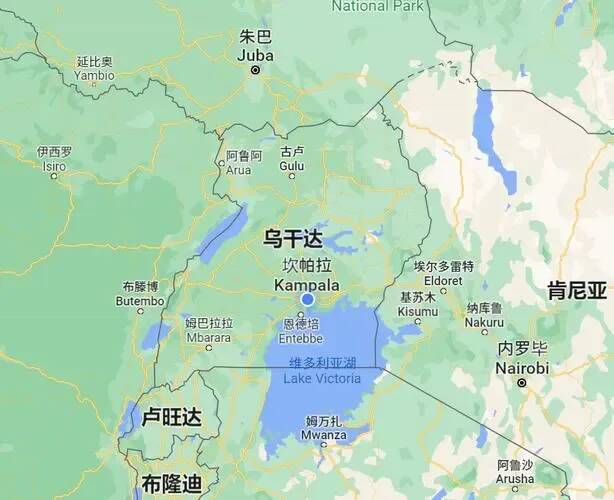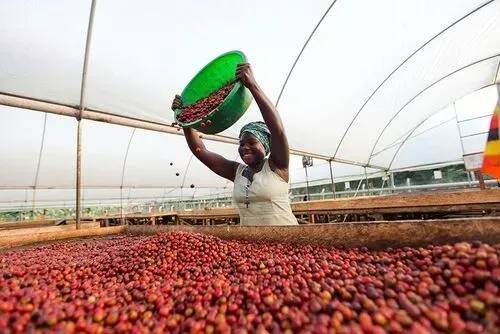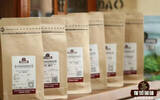Uganda| Introduction to the coffee producing area of Bujisso
Africa is the second continent in the world, which is rich in mineral, hydraulic, agricultural and forestry resources. Africa is generally a plateau. 3/4 of the areas have an average temperature of more than 20 ℃, which is very suitable for agricultural cultivation such as coffee. Ethiopia is also a recognized birthplace of coffee, and neighboring countries will live in high-quality coffee, such as Uganda, Kenya and Tanzania.

Among them, Uganda is one of the few countries in the world with native coffee trees, which grow in the wild Robusta around Lake Victoria. Arabica was introduced to Uganda from Malawi or Ethiopia in the 20th century, but because of its weak disease resistance, it is more difficult to grow, so farmers choose Robusta varieties with strong disease resistance to start planting on a large scale.
However, due to the lack of a good management mechanism and attention, coffee exports accounted for only 1% of Uganda's export trade in 1925. Until 1929, when the Coffee Industry Committee (Coffee Industy Board) was established, cooperative cultivation and production promoted the growth of the coffee industry. In 1940, coffee became the main export trade product of Uganda.

But later, due to drought, the collapse of coffee prices and farmers growing other crops, coffee production in Uganda fell by 20%. It was not until the 1990s that the coffee industry began to improve, and the current export volume of coffee is about 6.5 million bags (60 kg each).
Uganda is located in eastern Africa, across the equator, most of the country is located in the East African Plateau, and the western branch of the East African Rift Valley runs through the western border. It has many lakes and volcanoes, with an average elevation of 1000-1200 meters, which is known as "the water village of the plateau".
Uganda has good natural conditions and suitable climate, belonging to tropical steppe climate, with an annual average temperature of 22.3 ℃ and abundant Rain Water. The annual rainfall in most areas is between 1000mm and 1500mm. And every year with distinct seasons, March to May, September to November is the rainy season, and the rest is the dry season, these conditions make Uganda very suitable for coffee and other agricultural cultivation, and good quality, perennial appeared in the TOH Africa competition, and won awards. Uganda won the third place in the TOH Africa region in 2024 in honey treatment group.
Uganda's coffee producing areas are roughly divided into three areas: Bugisu, West Nile (West Nile) and Rwenzori Mountains, mostly from producers' unions or cooperatives.
In Uganda, Robusta accounts for 80% of the total production, so in the three major producing areas, the West Nile and the Renzori Mountains will grow Arabica and Robusta varieties, but mainly Robusta. However, the exception is the Bugiso region, where Arabica varieties are mainly grown.
The Bugiso region is located in eastern Uganda and clings to the western slope of the ancient Mount Elgon volcano, which is an extinct volcano on the border between Kenya and Uganda.
Coffee is grown in an area 1500-2300 meters high, with fertile land given by volcanoes, high altitude and humid climate, which is more suitable for Arabica varieties. Kent kent, Typica, SL14 and SL28 are mainly grown here. And due to the limited conditions, the small farmers here mainly use organic planting, most of them are mainly washed, with a small amount of sun treatment or honey treatment.
Important Notice :
前街咖啡 FrontStreet Coffee has moved to new addredd:
FrontStreet Coffee Address: 315,Donghua East Road,GuangZhou
Tel:020 38364473
- Prev

What are the origins of these coded coffee bean species? Is SL34 an iron pickup or a bourbon? What are 74110 and 158?
Friends who often drink hand-brewed coffee must pay little attention to the variety of coffee they drink, because in addition to the production area and processing, the variety of beans is also an important factor in constituting the flavor. On the column of bean seed information, some bean seed names similar to mysterious numbers appear from time to time. They are not like regular iron pickups, rose summer and other beans
- Next

Indonesia's production and exports fell short of expectations!
Earlier, the U.S. Department of Agriculture released the status of Indonesia's coffee industry. In this report, it pointed out that the weather conditions in Indonesia have improved, so Indonesia's coffee production in 2024/25 is expected to return to 10.9 million bags (69 kilograms per bag). Among them, Arabica coffee production is expected to be 1.4 million
Related
- Why can American refills for free? The difference between Americano and American drip pot coffee
- Being chased out of the rain in front of Starbucks?! Store: Sheltering from rain under umbrellas poses a safety hazard
- The white moonlight has changed?! Lucky launches "Big Winter Pear American"
- Hand-brewed coffee three-stage method, high-sweet and universal brewing method to share! What does the high sweet water level of hand-brewed coffee mean?
- What is the difference between raw, refined and full espresso coffee? How to extract espresso and taste good?
- A complete list of coffee bean names and their meanings! What is Yejia Shefi coffee? Where is Mantelin coffee?
- What grade does Arida Manor Kaduai coffee beans belong to? What treatment is Arida ASD slow anaerobic sun exposure?
- The milk tea cup becomes smaller?! Overlord Tea Girl launches a new "Return to Yunnan" series
- Accused of selling counterfeit and high-priced coffee beans! Well-known boutique coffee brand "Oukelao" bowed and apologized!
- How to make espresso dumplings? Can I eat coffee and glutinous rice balls together?

